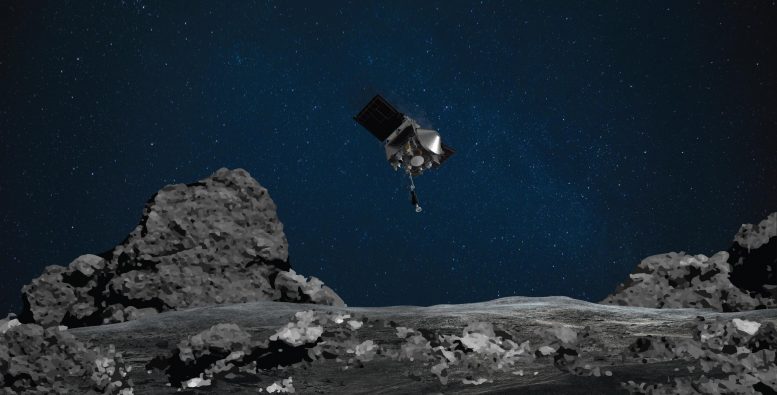
NASA’s OSIRIS-REx mission readies itself to touch the surface of asteroid Bennu. Credit: NASA/Goddard/University of Arizona
NASA will broadcast coverage of a first for the agency as its Origins, Spectral Interpretation, Resource Identification, Security-Regolith Explorer (OSIRIS-REx) mission attempts to collect a sample of asteroid Bennu on Tuesday, October 20, at 6:12 p.m. EDT.
Live coverage of the spacecraft’s descent to the asteroid’s surface for its “Touch-And-Go,” or TAG, maneuver, which will be managed by Lockheed Martin Space near Denver, will begin at 5 p.m. on NASA Television and the agency’s website.
Beginning with an orbit departure maneuver around 1:50 p.m., the full sequence of the complicated engineering feat will be covered on @OSIRISREx, and media and the public can ask questions using the hashtag #ToBennuandBack.
In addition to the broadcast Tuesday, October 20, briefings and social media activities will cover the mission and asteroid science on Monday, October 19.
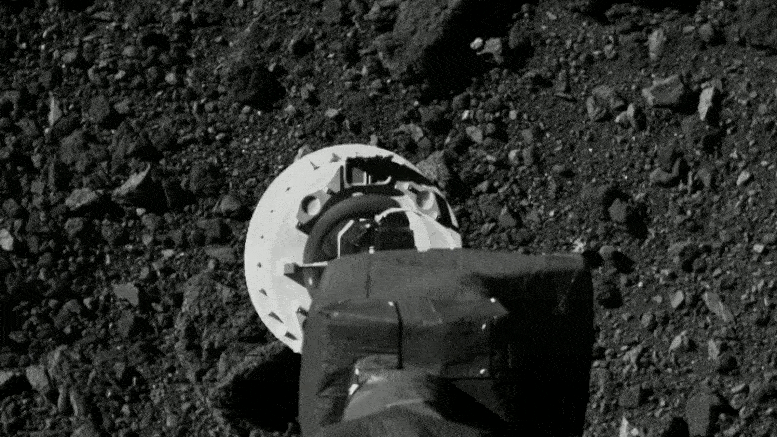
These images were captured during testing of the spacecraft above the surface of Bennu. The spacecraft’s sampling arm – called the Touch-And-Go Sample Acquisition Mechanism (TAGSAM) – is visible in the lower part of the frame. Credit: NASA/Goddard/University of Arizona
OSIRIS-REx, which is about the size of a 15-passenger van, is currently orbiting the asteroid Bennu 200 million miles from Earth. Bennu contains material from the early solar system and may contain the molecular precursors to life and Earth’s oceans. The asteroid is about as tall as the Empire State Building and could potentially threaten Earth late in the next century, with a 1‐in‐2,700 chance of impacting our planet during one of its close approaches. OSIRIS-REx is now ready to take a sample of this ancient relic of our solar system and bring its stories and secrets home to Earth.
Full mission coverage and participants (all times Eastern):
Monday, October 19
1 p.m. – Asteroid Science and Planetary Defense media teleconference with the following participants:
- Lori Glaze, Planetary Science Division director, NASA Headquarters, Washington
- Hal Levison, Lucy mission principal investigator, Southwest Research Institute, Boulder, Colorado
- Lindy Elkins-Tanton, Psyche mission principal investigator, Arizona State University, Tempe
- Andrea Riley, DART mission program executive, NASA Headquarters
- Jamie Elsila, research scientist at NASA Goddard Space Flight Center, Greenbelt, Marylan
3 p.m. – OSIRIS-REx Science and Engineering televised briefing with the following participants:
- Thomas Zurbuchen, associate administrator, Science Mission Directorate, NASA Headquarters, Washington
- Lori Glaze, Planetary Science Division director, NASA Headquarters
- Heather Enos, OSIRIS-REx deputy principal investigator, University of Arizona, Tucson
- Kenneth Getzandanner, OSIRIS-REx flight dynamics manager, Goddard
- Beth Buck, OSIRIS-REx mission operations program manager, Lockheed Martin Space, Littleton, Colorado
Tuesday, October 20
1:20 to 6:30 p.m. – Live stream animation displaying OSIRIS-REx’s sample collection activities in real time. The animation commences with the spacecraft’s slew into position for the Orbit Departure Maneuver and runs through the entire sequence of TAG events, concluding after the spacecraft’s back-away burn. Event will be broadcast on the mission’s website.
5 to 6:30 p.m. – Live broadcast from Lockheed Martin of OSIRIS-REx’s descent to the surface of Bennu and attempt at sample collection.
Hosted by Dante Lauretta, OSIRIS-REx principal investigator at the University of Arizona, and Michelle Thaller, science communicator at Goddard, the broadcast will cover milestones in the last 90 minutes leading up to TAG and spacecraft back-away. It will include perspectives from team members and science leaders about the mission’s challenges and accomplishments.
A clean feed of the Mission Support Area during TAG is planned to run on NASA’s media channel.
Wednesday, October 21
5 p.m. – Post-sampling news conference – and release of new images – with the following participants:
- Dante Lauretta, OSIRIS-REx principal investigator, University of Arizona, Tucson
- Rich Burns, OSIRIS-REx project manager, NASA’s Goddard Space Flight Center in Greenbelt, Maryland
- Sandra Freund, OSIRIS-REx mission operations manager, Lockheed Martin Space, Littleton, Colorado
6:15 to 6:45 p.m. – A NASA Science Live episode will air with team members answering live questions from the public about TAG, OSIRIS-REx, and asteroid science. Use #ToBennuAndBack to participate.
Virtual NASA Social
NASA also will host a #ToBennuAndBack Virtual NASA Social. RSVP to the Facebook event for social media updates.
NASA Social participants will get a chance to:
- Connect virtually with like-minded space enthusiasts as we prepare for TAG
- Receive a NASA Social badge to share online or print at home
- Virtually tour the asteroid Bennu
- Access the broadcast and other activities around TAG
By applying to the group, participants are explicitly agreeing to the group’s rules as set forth by NASA. All membership questions must be answered to be accepted to the group.
NASA’s Goddard Space Flight Center in Greenbelt, Maryland, provides overall mission management, systems engineering, and the safety and mission assurance for OSIRIS-REx. Dante Lauretta of the University of Arizona, Tucson, is the principal investigator, and the University of Arizona also leads the science team and the mission’s science observation planning and data processing. Lockheed Martin Space near Denver built the spacecraft and is providing flight operations. Goddard and KinetX Aerospace are responsible for navigating the OSIRIS-REx spacecraft. OSIRIS-REx is the third mission in NASA’s New Frontiers Program, which is managed by NASA’s Marshall Space Flight Center in Huntsville, Alabama, for the agency’s Science Mission Directorate in Washington.

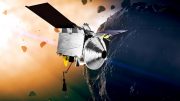
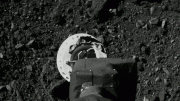
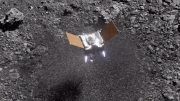
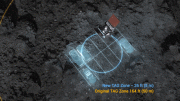
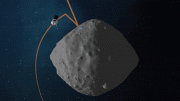
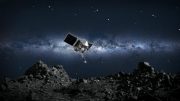
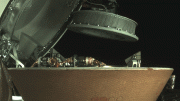
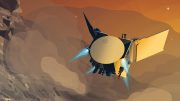
Be the first to comment on "NASA OSIRIS-REx Asteroid Sample Collection – How to Watch Live Broadcast"